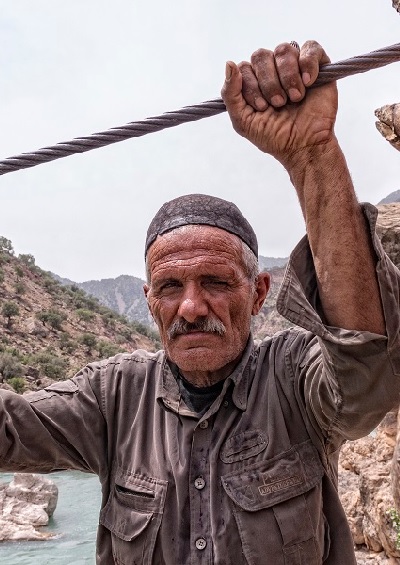Win-Win Entrepreneurship in Iran
An Iranian farmer has devised a way to both help nomads move their herds, and protect his farmland.
November 1, 2015

Seyed Esmail Mousavi’s interest in documentary photography began while he was studying graphics. He is currently preparing a book on the Bakhtiari tribe, a nomadic people with a distinct language, culture and clothing.
Near the village of Dinaran in the mountainous border region of north-west Iran’s Chaharmahal-va-Bakhtiari province, Gholam Hossein and his family farm land beside a deep river canyon.
Twice a year their work is disturbed by the arrival of tribes of Bakhtiari nomads moving their herds of sheep, goats and other livestock from their winter quarters to their summer quarters each spring, then back again each autumn, a journey of 400 to 500 kilometers in each direction.
With the nearest river crossing 15 kilometers away, Gholam and his seven sons decided a few years ago to offer these nomads a quicker way of getting to the other side, building a cableway using steel hawsers and pulleys.
Gholam’s system can transport up to 1,000 livestock daily. He charges a third of a dollar for each sheep or goat carried, with people and their possessions transported for free.
“These nomads usually cause damage to our farmland. Using our pulley system both protects our land and reduces their travel time by at least one day. It’s a win-win business,” says Gholam.
Text and photographs by Seyed Esmail Mousavi
 Seyed Esmail Mousavi’s interest in documentary photography began while he was studying graphics. He is currently preparing a book on the Bakhtiari tribe, a nomadic people with a distinct language, culture and clothing.
Seyed Esmail Mousavi’s interest in documentary photography began while he was studying graphics. He is currently preparing a book on the Bakhtiari tribe, a nomadic people with a distinct language, culture and clothing.The Other Hundred is a unique photo-book project aimed telling the stories of people around the world who are not rich but who deserve to be celebrated.
The Other Hundred Entrepreneurs: 100 Faces, Places, Stories — the second volume in The Other Hundred series — focuses on the world’s everyday entrepreneurs. It captures the reality that small and medium-sized businesses, rather than tech billionaires or elite MBAs, contribute the majority of the world’s jobs, including half of all jobs in Africa and two-thirds in Asia.
The book offers an alternative to the view that most successful entrepreneurs were trained at elite business schools. Here are people who have never written a formal business plan, hired an investment bank, planned an exit strategy or dreamt of a stock market floatation. Some work for themselves, others employ a few people, still others a few hundred.
 The book’s 100 stories were chosen from a pool of 10,000 images shot in nearly 150 countries. The book is published by Oneworld Publications in London and is available in bookstores worldwide and online.
The book’s 100 stories were chosen from a pool of 10,000 images shot in nearly 150 countries. The book is published by Oneworld Publications in London and is available in bookstores worldwide and online.




